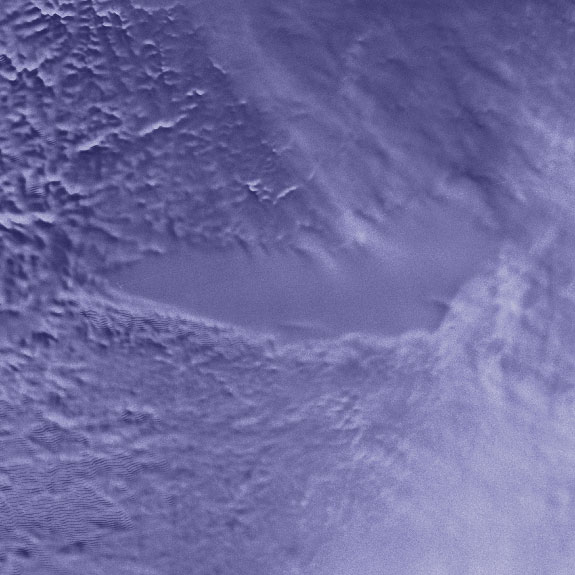Thousands of Species Found in a Lake Cut Off From the World for Millions of Years
Cut off for maybe as much as 15 million years, Antarctica’s Lake Vostok seems to be full of life

Lake Vostok lies beneath 2.4 miles of the Antarctic Eastern Ice Sheet. Photo: NASA / GSFC
In a lake cut off from the world for maybe as much as 15 million years, beneath 2.4 miles of Antarctic glacier ice, scientists have discovered as many as 3,507 different species representing everything from bacteria and fungi to, maybe, even more complex multicellular life.
In 1956, Russian scientists set up the Vostok research station on a relatively flat patch of ice in the heart of Antarctica’s eastern ice sheet. Research soon showed that the reason the terrain was so smooth was because the camp was resting far above a giant lake—subglacial Lake Vostok. Starting around 35 million years ago, ancient climate change turned Antarctica from a green landscape into an icy one. The change in climate trapped Lake Vostok beneath the growing East Antarctic Ice Sheet, and, as the sea receded, the lake was cut off from the ocean.
Two decades ago, Russian scientists began the long project of drilling down into Lake Vostok, a mission they finally completed in February 2012. With the drilling done, the work of trying to figure out if anything is alive down there began.
Scientists working with water from Lake Vostok have found genetic material that they think represents up to 3,507 different species, they report in a recent paper. The genetic material came from lake water that had frozen to the bottom of the Antarictic glacier. Comparing the genetic material against a database of species from around the world that have had their genes sequenced the scientists say that more than a thousand of these line up with known lifeforms. The identified species were mostly bacteria, though there were also some eukaryotes (mostly fungi), and there were two species of archaea. NBC’s Alan Boyle describes what the genes might mean:
The sequences included close matches for various types of fungi as well as arthropods, springtails, water fleas and a mollusk. What’s more, some of the bacteria from the sample are typically found in fish guts — suggesting that the fish they came from may be swimming around in the lake.
…”While the current conditions are different than earlier in its history, the lake seems to have maintained a surprisingly diverse community of organisms,” the researchers wrote. “These organisms may have slowly adapted to the changing conditions in Lake Vostok during the past 15-35 million years as the lake converted from a terrestrial system to a subglacial system.”
A significant number of the sequences were linked to organisms that live around deep-sea hydrothermal vents, suggesting that such features exist at the bottom of Lake Vostok as well. “Hydrothermal vents could provide sources of energy and nutrients vital for organisms living in the lake,” the researchers said.
One of the scientists who worked on the study, Scott Rogers, explained to NBC’s Boyle that the fact that other genetic sequences didn’t line up with anything we’ve seen before doesn’t necessarily mean that these are entirely new species living down in subglacial Lake Vostok. Rogers says that though some of the lifeforms down there will probably be brand new, some of them are probably just things we already know about but whose genes haven’t been studied in-depth and put in the particular database the researchers used.
If these findings hold up and if there is life in Lake Vostok that is truly unique on Earth, the finding would be a testament to the hardiness of life. It would be a reassurance that life can persist in some of the harshest conditions and an encouraging finding for those looking for life elsewhere in the universe.
More from Smithsonian.com:
No Life Found In Lakes Beneath Antarctic Glaciers—Yet
Brand New, Never Before Seen Bacteria Found in Frozen Antarctic Lake—Maybe
/https://tf-cmsv2-smithsonianmag-media.s3.amazonaws.com/accounts/headshot/smartnews-colin-schultz-240.jpg)
/https://tf-cmsv2-smithsonianmag-media.s3.amazonaws.com/accounts/headshot/smartnews-colin-schultz-240.jpg)